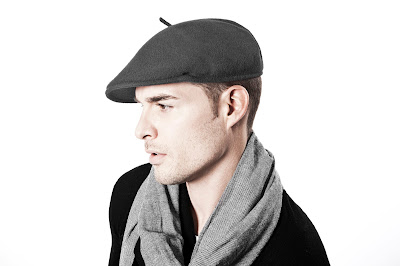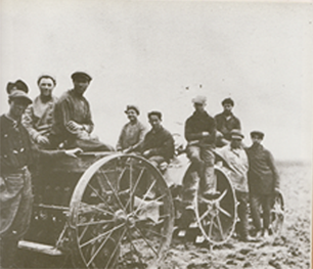JimK
New in Town
- Messages
- 48
- Location
- North Ogden, Utah
Laulhère béret bayadère in the 11p diameter - size 61cm:



 John Lofgren Monkey Boots Shinki Horsebuttt - $1,136 The classic monkey boot silhouette in an incredibly rich Shinki russet horse leather.
John Lofgren Monkey Boots Shinki Horsebuttt - $1,136 The classic monkey boot silhouette in an incredibly rich Shinki russet horse leather.  Grant Stone Diesel Boot Dark Olive Chromexcel - $395 Goodyear welted, Horween Chromexcel, classic good looks.
Grant Stone Diesel Boot Dark Olive Chromexcel - $395 Goodyear welted, Horween Chromexcel, classic good looks.  Schott 568 Vandals Jacket - $1,250 The classic Perfecto motorcycle jacket, in a very special limited-edition Schott double rider style.
Schott 568 Vandals Jacket - $1,250 The classic Perfecto motorcycle jacket, in a very special limited-edition Schott double rider style. 

Laulhère béret bayadère in the 11p diameter - size 61cm:

Francis Mallmann (born 1956) is an Argentine celebrity chef, author, and restaurateur who specializes in Argentine, and especially Patagonian cuisine, with a focus on various Patagonian methods of barbecuing food.On the topic of berets in Argentina, I recently received this catalogue, where a beret is modeled by famous chef and noted boinero Francis Mallmann!
View attachment 146907
View attachment 146906
Francis Mallmann (born 1956) is an Argentine celebrity chef, author, and restaurateur who specializes in Argentine, and especially Patagonian cuisine, with a focus on various Patagonian methods of barbecuing food.
Looks like BBQ porn to me.
Now I feel inadequate with my simple backyard charcoal grill.
Not sure I can set up a large wood fired BBQ pit in my backyard.
It sure looks fun and smoky to BBQ over a wood fire.
The photos remind me of the Instagram account of @Gueulton a restaurant
in Royan, France where the pictures are of big beefy guys wearing berets and
BBQing big racks of meat over wood fires.
The beret in the Best Made catalog is a Laulhere.
Looks very nice and should be well made.
Plus, It has a special Best Made logo.
I think I know exactly what you mean, but apart from shining some light on the why's & how's, I fear there is not a lot you can do about it.Advise welcome please.
My first beret was 20 years ago, a thin, light one, probably a woman's. I could pull it long and forward, and it looked wonderful with an old quilted barn jacket.
I now have two berets: an old Jaxon beret missing the leather sweatband and a Elosequi Impermiable missing the tip.
I love the softness of the Jaxon, it's light, shapes well and it's easy to forget. Without the band it has a naked edge and is a bit ragged. Love it though.
I can't quite warm up to the other, it's heavy, ponderous. Doesn't have a sharp edge and doesn't have those nice indents like we see in the photos. It sort of keeps shape but doesn't, so it looks like I'm wearing a great, black Mento. It wears me like some kind of surly, parasitic mushroom compelling it's host on a walking tour.
What can be done? I really want to enjoy the Elosequi, but can't find the right way of wearing it. Any suggestions beyond 'buy a new one'?
Yes, Daan, I think you describe the Jaxon exactly. Very lightweight and much softer. Both are years several years old. The Elósegui is a Super Lujo purchased from Ron Greer years ago. Interesting that you say it can be worn in summer, I wouldn't have thought.However, Laulhère too had made Jaxon berets (for a short period) and your model may be made by Laulhère - a softer, lower density beret compared to the Elósegui model.
I think I know exactly what you mean, but apart from shining some light on the why's & how's, I fear there is not a lot you can do about it.
First, it is interesting that your Jaxon beret doesn't give you the trouble your Elósegui does, as most Jaxon's were actually made by Boinas Elósegui. However, Laulhère too had made Jaxon berets (for a short period) and your model may be made by Laulhère - a softer, lower density beret compared to the Elósegui model.
View attachment 147157 View attachment 147155 View attachment 147156
Anyway, your Elósegui beret (assuming it is a Super Lujo) is made in the densest, tightest knit of any beret to be found. This makes these berets such excellent insulators (easy to wear in both winter and summer) and very long lasting.
The downside is that these berets are harder to break in and remain pretty stiff; it takes time to shape the beret and shape it in a desired fashion. Best advise I can give is to persevere; keep wearing it, always in the same way (keep the label as guide to what's front and rear), pull it slightly to the front and consistently 'tweak' it in the same places (typically at the front) to give it it's indents. Overtime, it will grow on you and you'll learn to love it.
Of course, a much easier (and faster) way, (despite coming from the other side of the world), is to order yourself a beret of similar quality but in a lighter density knit. Auloronesas are the best examples of such.
Repetitious maybe, but a very good question! Without doubt, sizing is the most confusing hurdle to overcome when choosing a beret! I quote here from my book Basque Berets:Sorry for what is certainly a repetitious question; I am on page 93 of 130. What is a pounce?